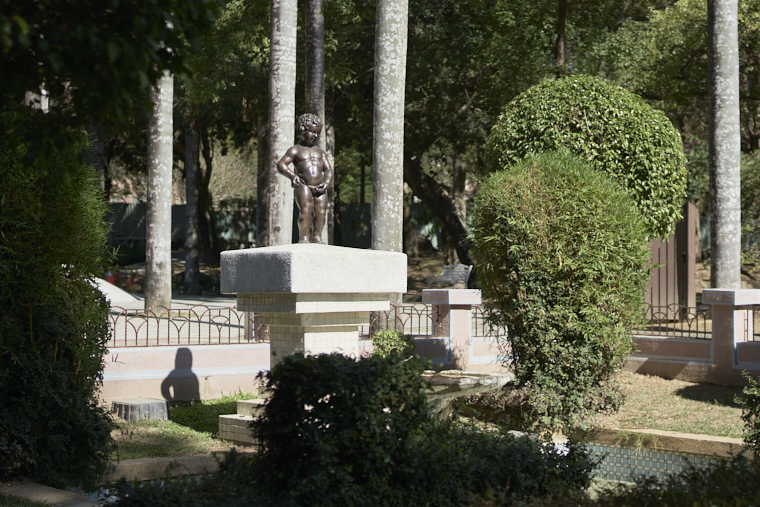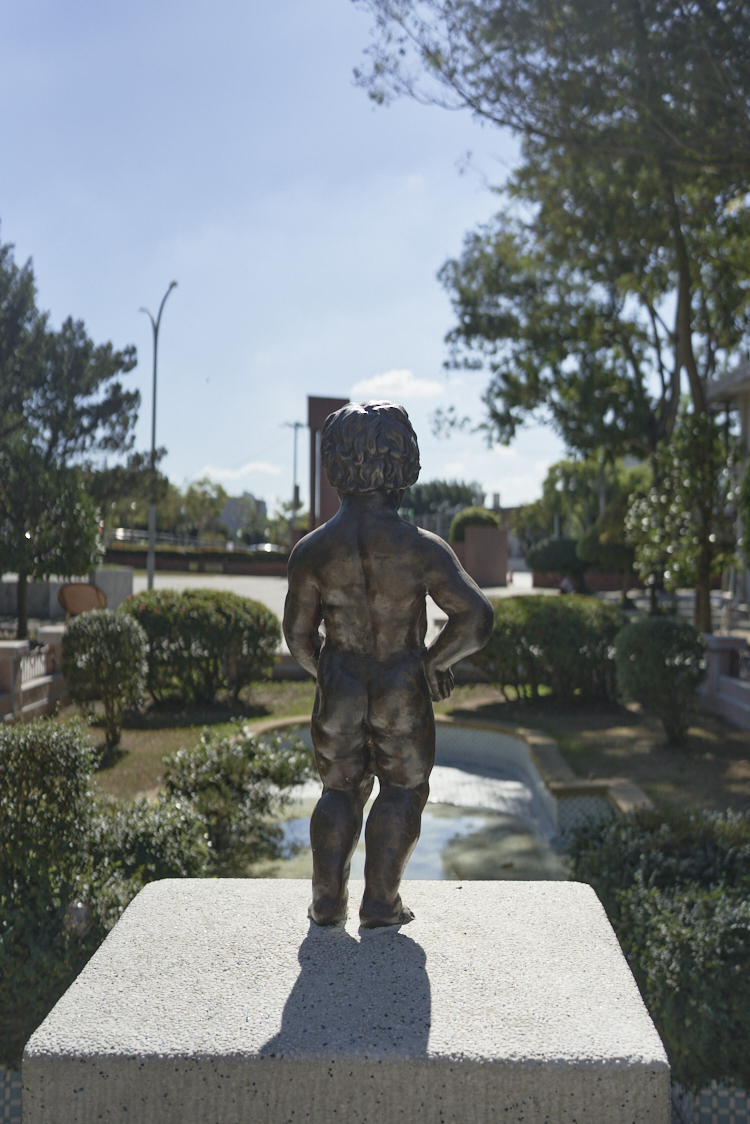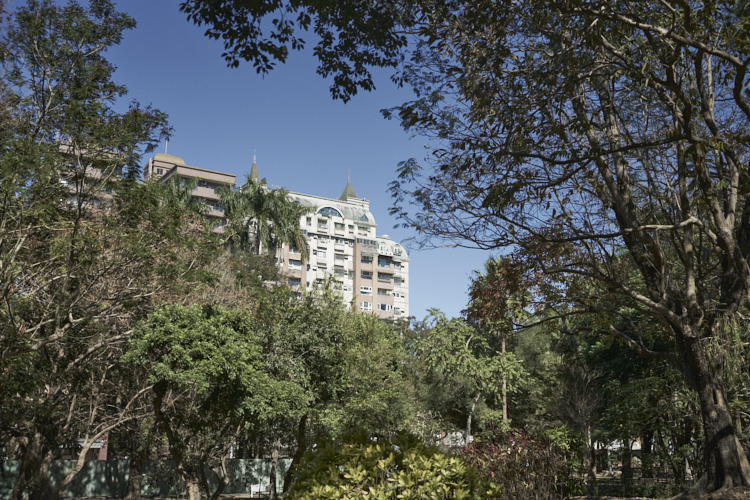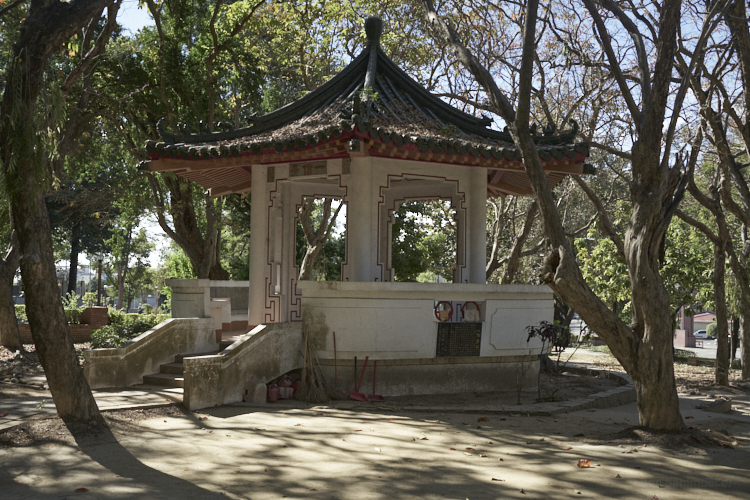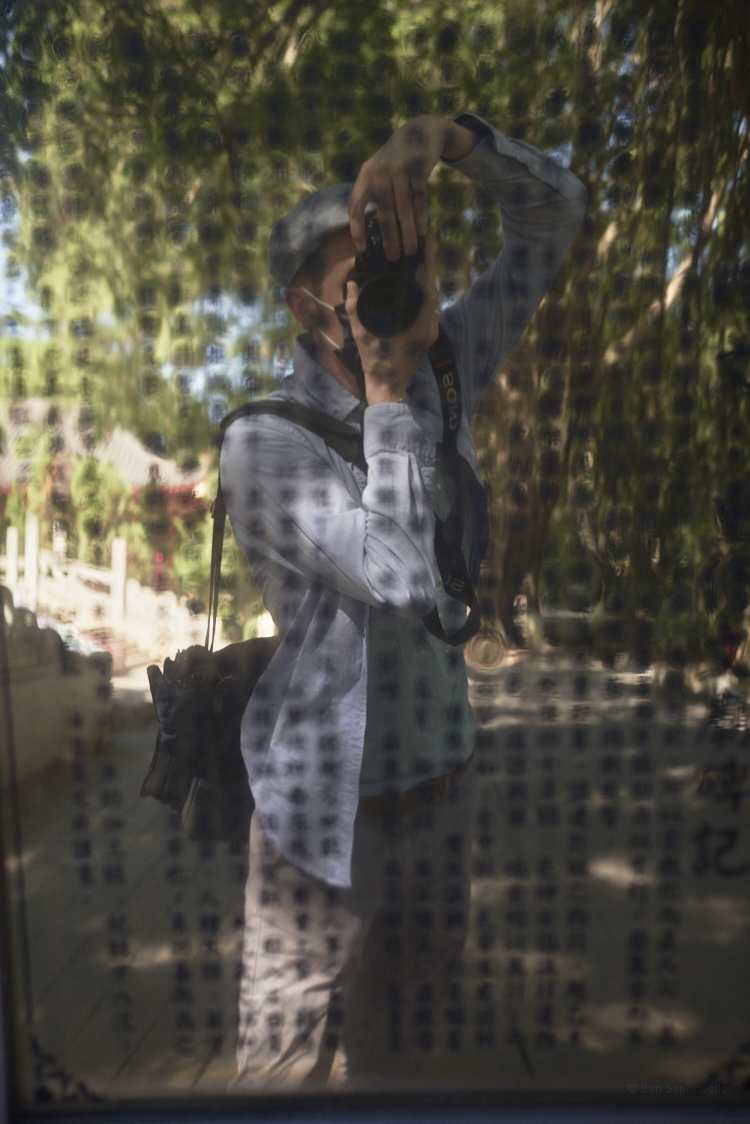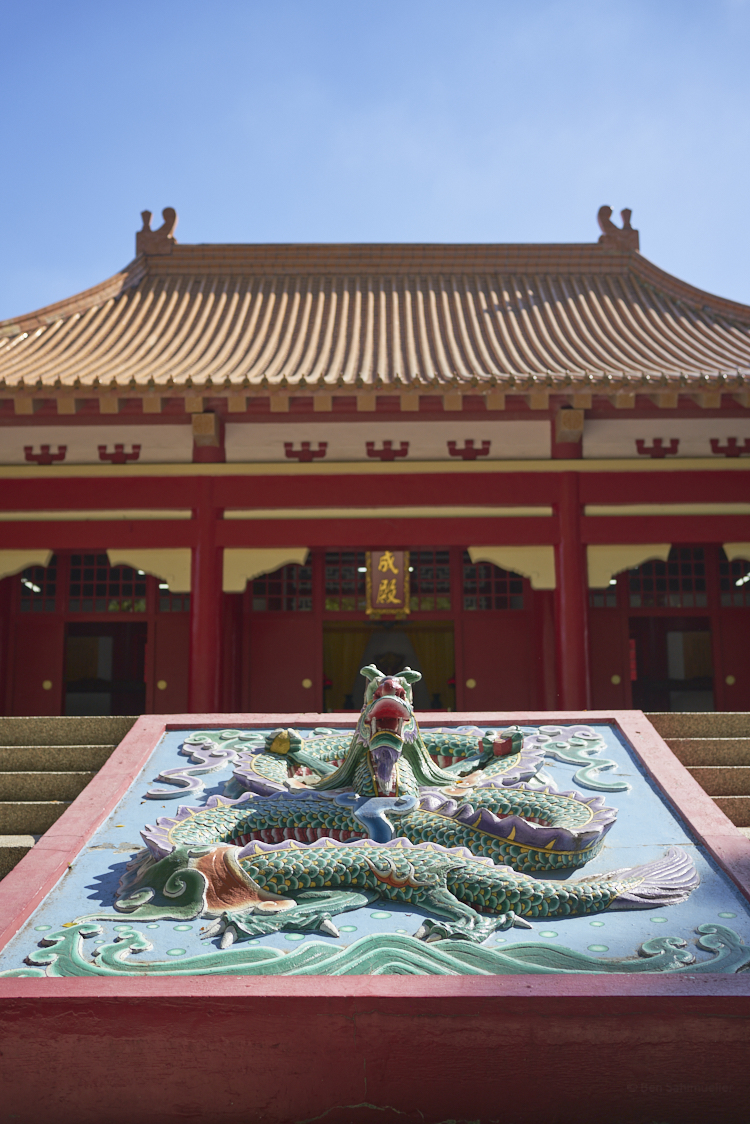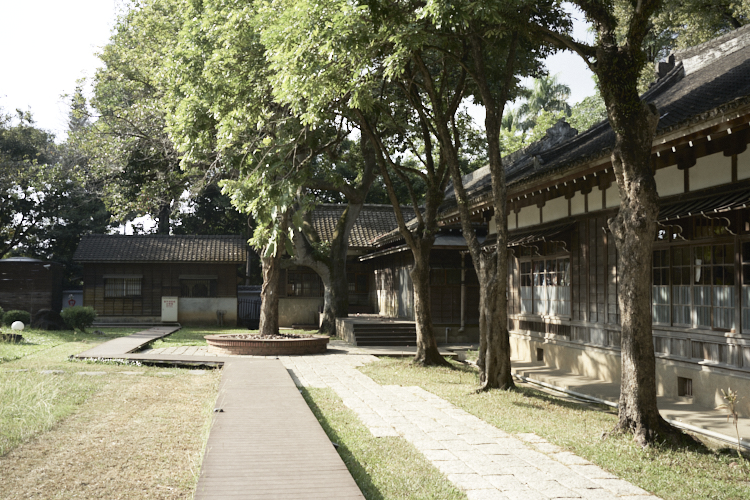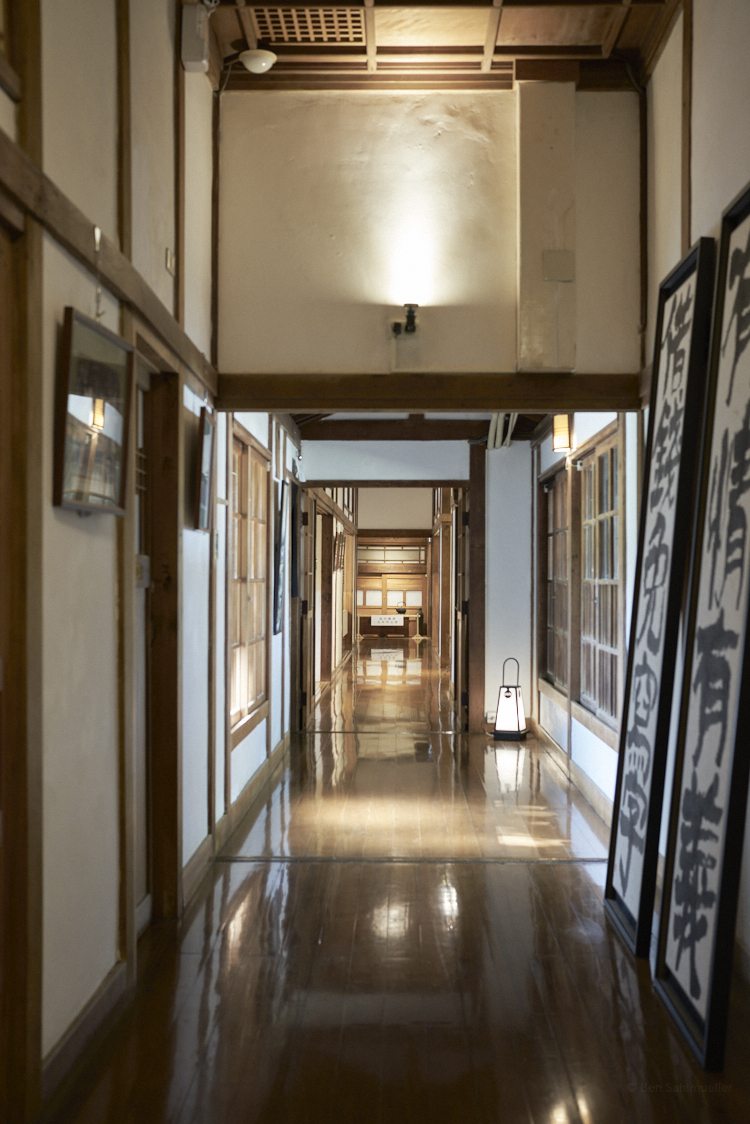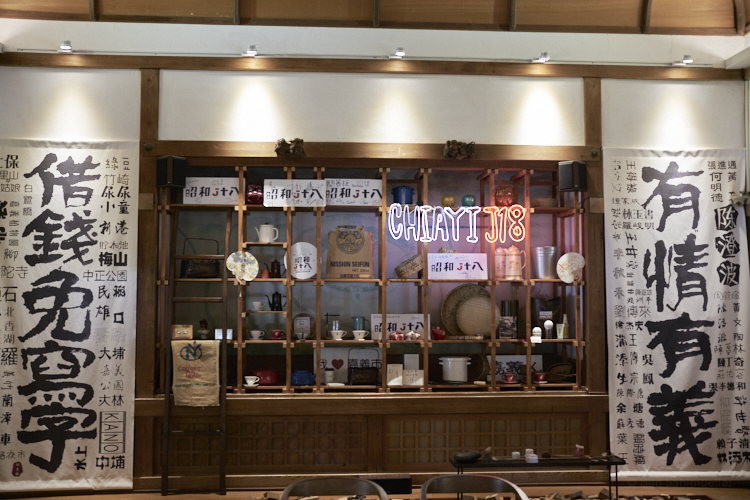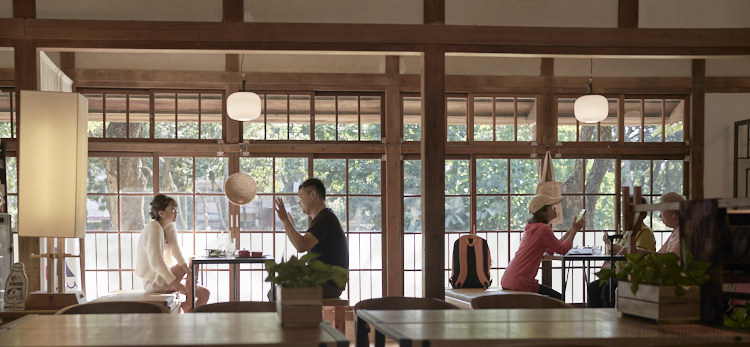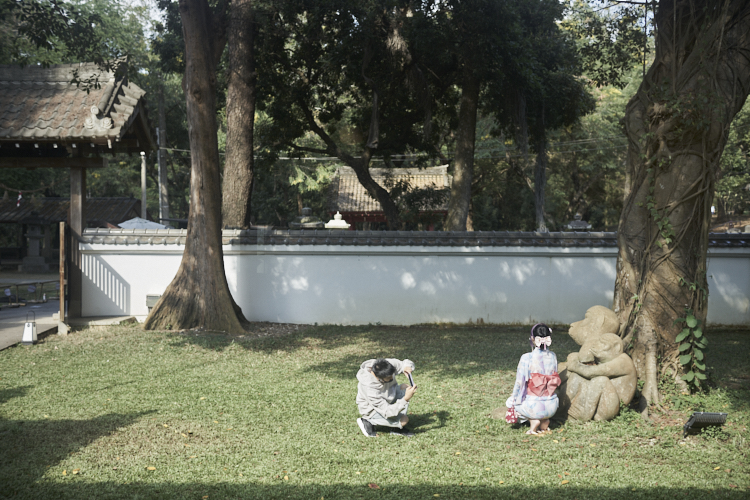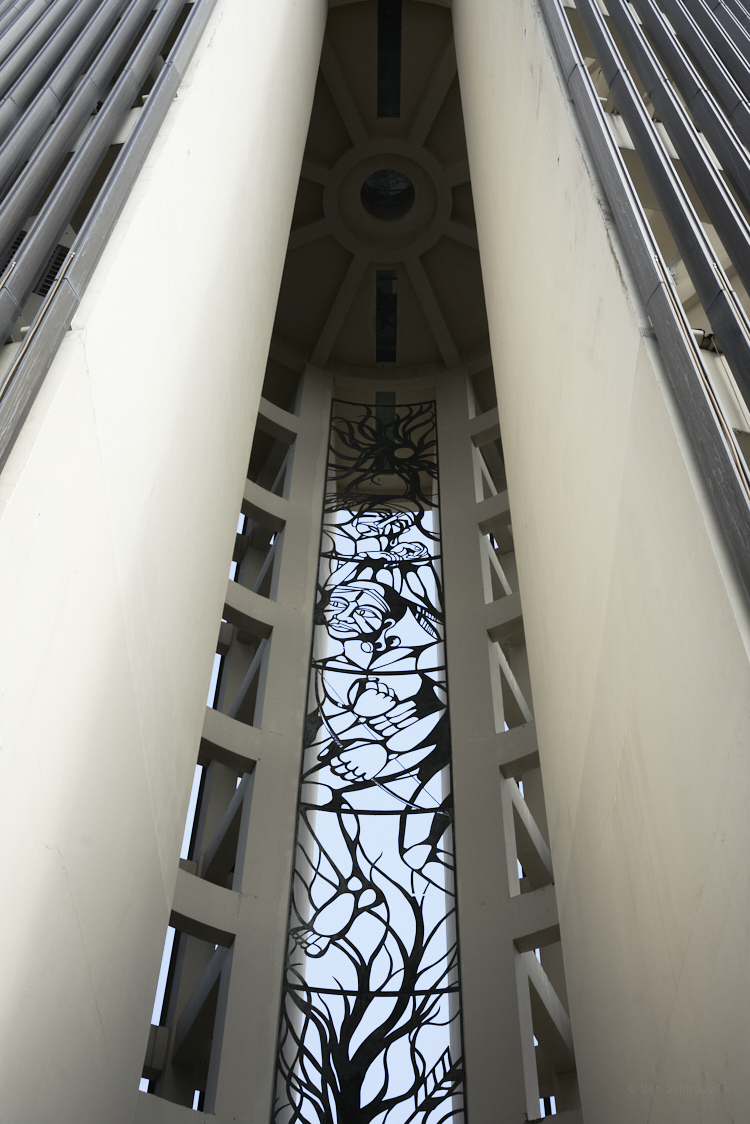Chiayi Park (嘉義公園), Shooting the sun
This essay is part V of a loose series reflecting on a visit to Chiayi in November 2022. Click here for part I (Intro), part II (228 National Memorial Park), part III (228 Memorial Park) and part IV (Chiayi Old Prison).
While our journey to Chiayi was motivated by the darker days and issues of the past (the 228 incident and an old prison), the visit to Chiayi Park was mainly motivated by simple touristy curiosity – and hunger. Still, as we were about to find out, Chiayi Park was actually dedicated of one of the very darkest deeds of human history… (*X files theme playing*)
It started hot and light, though. Right at the entrance, we were greeted by an almost perfect copy of Manneken Pis, the unofficial-yet-kind-of-official mascot of Brussels. Its appearance and placement was rather anti-climactic (with the much more typical debris and hoarding in the background), and I still haven’t figured out what it does there. (The only info Wikipedia provides is: “The Manneken Pis in Chiayi Park used to be white, but now it is green.” I love it!)
Strolling through the park, several pavilions, a temple, a pillar commemorating veterans, and a breeding bird awaited us, leading to a picturesque historic wood house in the middle of the park: “Chiayi City Historical Relic Museum”. In a manner also well-known to anyone in Taiwan, the building offered a balanced mix of catering, commerce, and a thin layer of historic documentation. Just as typical, once you start to ignore the various displays of mostly tasteful gimcrack, the atmosphere was calm and balanced, the service good, and the food westernized, colorful (“phone eats first”) – and a bit bland. What was all but bland were the other guests, who gifted us a small fashion show with one of the kimonos that were apparently for rent!
It was after lunch that the main sight of the park awaited us, a historic monument indeed, the “Shooting the Sun Tower”. The Tower was built (more or less?) on an aboriginal site of the Pingpu tribe. It has its name from a great myths I am copying here brashly from the Chinese Wikipedia page:
According to legend, in the ancient times, two suns appeared in the sky in turn. The world has no day and night, and one of the suns is much bigger than the current one. Therefore, the weather is very hot, the flowers and trees die, the water of the river dries up, the crops cannot grow, and the people’s life is very difficult.
So the people in the clan decided that unless a sun was shot down, their descendants might not be able to live and work in peace, and the race would also go extinct. At this time, three warriors volunteered to take up the task of shooting the sun. So the people in the clan began to prepare and carry dry food supplies for them. Because the road to the sun is very long, the three of them each carried a baby on their backs, and with the blessings of their clansmen, they embarked on a journey to shoot the sun. Along the way, they planted the oranges they had eaten on the ground, hoping that they would germinate and serve as food for the return journey.
Day after day, the three warriors who set out at the beginning were no longer strong, and had already become gray-haired and weak old men; and the babies at that time had grown up. The three warriors died one after another; while the growing baby inherited the original tasks and missions and continued to move forward.
One day, the three warriors finally reached the sun, so they drew their bows and shot. After the sun was shot, a pile of hot blood flowed out , and he died. One of them was drenched in blood from his head and ended his life; the other two escaped despite being burned. the way home, they saw that the oranges planted by the former warriors had grown very tall, and the trees were full of fruits.
When the two warriors returned to the village, they had turned into gray-haired old men. But since then, there have been no two suns in the sky, but day and night. And the moon we now see at night is the dead body of the sun that was shot at that time.
Pingpu tale, via Wikipedia.
The darkest deed of human history indeed!
